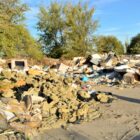Hazardous Companies
Novo Nordisk advarer om produktionsstop og medicinmangel ved et PFAS-forbud
|
Forslaget om et EU-forbud af PFAS rejst af Danmark og fire andre lande kan føre til ”omfattende lukning af medicinproduktion i Europa” og stille mere end ”600 essentielle lægemidler i farezonen”. Det advarer lægemiddelsbranchens europæiske organisation EFPIA om i et høringssvar til EU’s kemikalieagentur ECHA. Udover høringssvaret har brancheforeningens formand, Lars Fruergaard Jørgensen, administrerende direktør i Novo Nordisk, derefter henvendt sig direkte til EU-kommissionens formand med det samme budskab. Det viser aktindsigter og anden research i projektet Foreverpollution.eu, et samarbejde mellem journalister i 16 lande, koordineret af den franske avis Le Monde. Lægemiddelbranchens aktivitet er et eksempel på de omfattende forsøg på at påvirke EU-lovgivningen allerede inden den politiske proces er gået i gang.

